User login
Our Advocacy Priorities in 2025
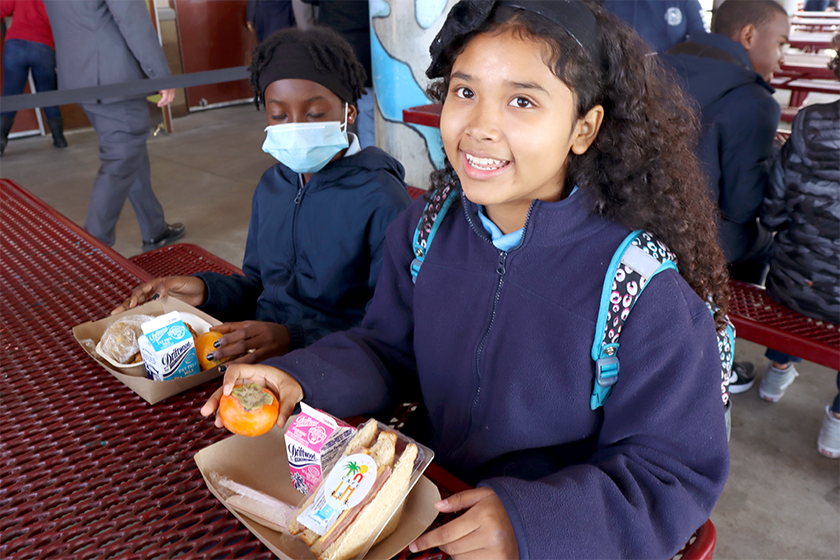
Our Advocacy Priorities in 2025
The Center for Ecoliteracy’s unique approach to policy change weaves stories and data to center the voices of school nutrition leaders and students. In 2025, we endeavor to build on the landmark success of California’s School Meals for All program, providing resources and support for public school districts to address remaining barriers in students’ access to fresh and local school meals.
Since California’s School Meals for All program began, participation in school meals has increased by nearly 8%, and students and school nutrition professionals report reduced stigma. This increase in school meal participation has highlighted long-term challenges for school nutrition programs, such as staffing shortages, decades of underinvestment in school kitchen facilities, and hungry students missing or not finishing meals due to limited time to eat.
Our proposed policy solutions are informed by the school nutrition community, students, research, and the political landscape. While our advocacy is focused in California, our reach spans nationwide by creating a model for transforming school food, sharing resources, and maintaining partnerships to build this movement at the state and federal levels.
- wide
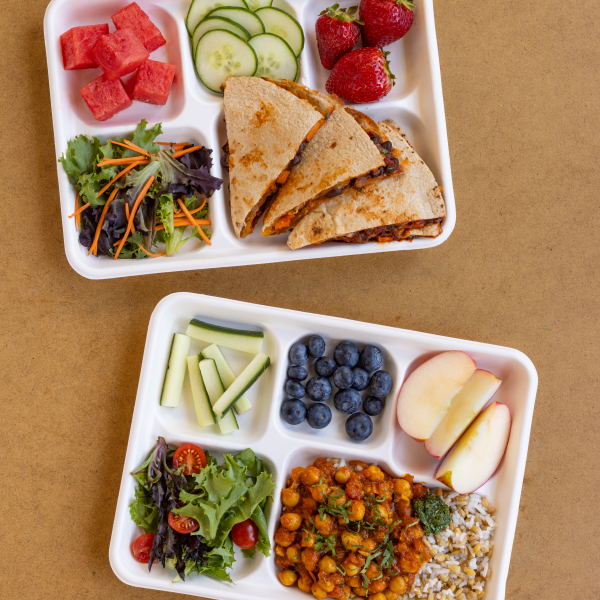
School Meals for All
School Meals for All ensures that every student has the nourishment they need to learn and thrive at school, improves the culture around school meals, and directly addresses childhood hunger. This policy is critical in California, where 44% of food-insecure families do not qualify for federal school meal assistance. As a leader of the School Meals for All coalition, the Center for Ecoliteracy successfully advocated for School Meals for All in 2021. California became the first state in the nation to provide free breakfast and lunch to all 5.9 million TK–12 public school students.
In 2025, we will advocate for full state funding to address increased student demand, for state solutions that maximize federal funding for the program, and to protect school nutrition programs from federal cuts. The majority of funding for California's School Meals for All program is through federal school nutrition programs. Maximizing federal funds and protecting federal school nutrition programs from cuts is essential to ensure California's continued leadership in transforming school food.
0 - wide
“Our military families were reluctant to fill out meal applications thinking the meal program was ‘a handout’ but now that meals are free for all students, we are serving many more. Our staff are so happy they don't need to deal with negative balances or asking students for money. It allows the cafeteria to be a positive, supportive environment for our students.” — School Nutrition Director, Southern Region
0 - wide
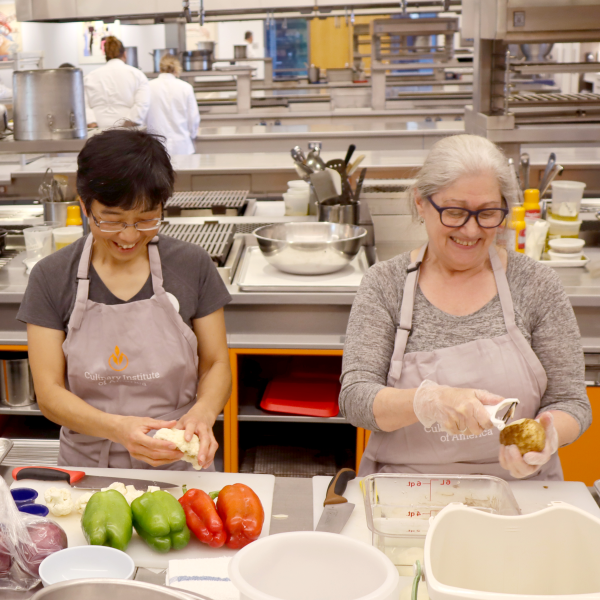
Training and Equipment for School Nutrition Professionals
California began funding a Kitchen Infrastructure and Training (KIT) program in 2021 to allow for much-needed upgrades to kitchen facilities, new equipment, and culinary training opportunities for school nutrition professionals. In 2020, the UC Berkeley Center for Cities and Schools estimated that it would cost $5.8 billion to update California public school kitchen facilities and provide staff training to serve freshly-prepared school meals. According to a recent Center for Ecoliteracy survey, this program is working — the majority of school districts are using KIT funds to serve more fresh and local school meals. To date, the state has invested $750 million.
We will continue to advocate for the KIT program as a proven strategy for school districts to serve more fresh and local school meals.
0 - wide
“Our school kitchens were built in the 1970s and early 1980s to make 60 to 100 meals a day. We are currently pushing 422 to 571 meals a day out of these same kitchens.” — Amy Jensen, Director of Nutrition, Black Oak Mine Unified School District
0 - wide
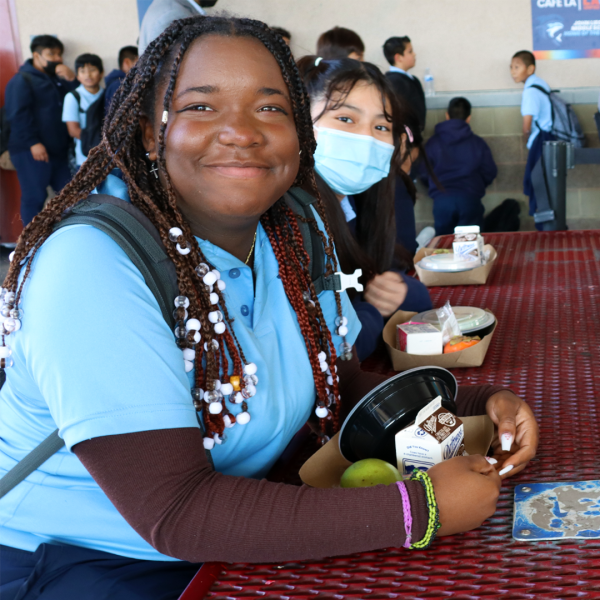
Students’ Time to Eat
Students need sufficient time to eat their school meals. Research shows that when students have at least 25 minutes for lunch, they waste less food, eat more fruits and vegetables, experience less hunger, and perform better academically. In a recent Center for Ecoliteracy survey, California school nutrition directors reported that 74% of elementary students have less than 15 minutes to each lunch and 28% of elementary students have just 5–9 minutes. This is not enough time to properly eat a meal, especially for our youngest learners.
We will continue to explore policy pathways that support school districts in extending time to eat.
0 - wide
“Nobody can eat a full, balanced meal in five minutes. We source local ingredients and scratch cook in-house, but students don’t have the time to eat these meals with the demands on their time during the short lunch period.” — Michael Jochner, Director of Student Nutrition and Records Retention, Morgan Hill Unified School District
0 - wide
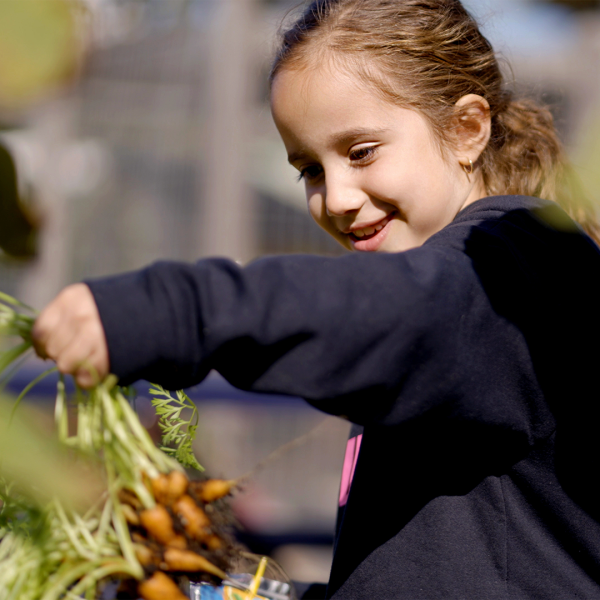
Farm to School
Farm to School programs increase purchases from local farmers and provide hands-on educational opportunities for students to make connections between their classroom, cafeteria, and garden. The Center for Ecoliteracy successfully advocated for a Farm to School Incubator Grant Program to be established in 2020, which helps realize the full potential of California’s landmark School Meals for All program. Farm to School increases purchases from local farmers, leveraging the buying power of California’s nearly $5 billion school food industry to support local economies. In a recent Center for Ecoliteracy survey, 63% of grant recipients reported using the grant funds to provide students with more food or nutrition education programs.
We will continue to advocate for further investments in the Farm to School Incubator Grant Program, the California Department of Food and Agriculture Office of Farm to Fork, and solutions outlined in Planting the Seed: A Farm to School Roadmap for Success.
0 - wide
“The California Farm to School Incubator Grant has helped us plant school gardens and connect our students to where their food comes from. The produce we grow on-campus is served on our salad bars along with locally-sourced produce. Next, we’re going to plan family cooking nights using our school garden produce.” – Jessie Wesch, Director of Food Services, Paso Robles Joint Unified School District
0 - wide
Climate Ready Schools Coalition
School closures due to wildfire smoke, floods, and other climate impacts jeopardize student health and learning. Creating school buildings and grounds that are more climate resilient and energy efficient prepares our schools for disasters and provides enhanced opportunities for student learning. The Center for Ecoliteracy’s role in this coalition is to uplift opportunities for the school food community and school gardens to be part of the solution, whether that’s investing in modernizing school kitchens with energy-efficient equipment or transforming asphalt lots into school gardens, orchards, and farms. Learn more about the Climate Ready Schools Coalition.
Campaign for Outdoor Learning
The Campaign for Outdoor Learning seeks to ensure that students spend 20–25% of their school day outdoors, starting in communities of color and low-income communities. This work provides opportunities for students to “learn in the real world” through a range of experiences from outdoor education and field trips to outdoor classrooms. The Center for Ecoliteracy’s role in this coalition is to advocate for outdoor opportunities for students to learn about the food system, such as in school gardens or on farm field trips. Learn more about the Campaign for Outdoor Learning.
0 - wide
Reference: The survey results referenced throughout this post are from a Center for Ecoliteracy survey conducted in November–December 2024 with school nutrition leaders from 58 public school districts across the state. Combined, these school districts serve 25% of California students.
0
